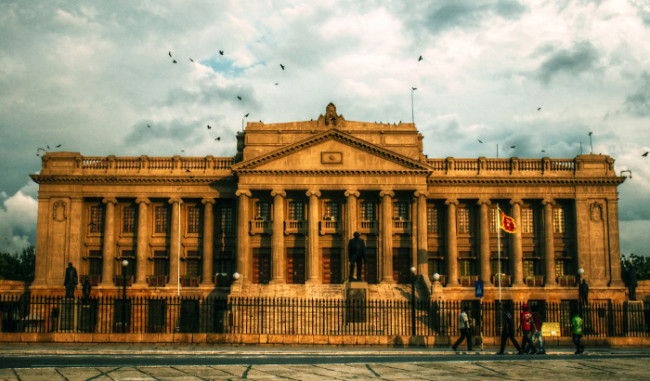
Corporate Sri Lanka is a treasure trove of interesting stories, if you’re into that sort of thing. Before you start to question our thinking, consider this: quite a few Sri Lankan companies have been around since the days of the British Empire. Given their age alone, isn’t it fair to assume that behind the doors of Sri Lanka’s corporate giants, lie a few interesting stories?
We thought that it would be a good idea to compile a list of interesting things about Sri Lanka’s top five listed corporates, ranked by market capitalisation.
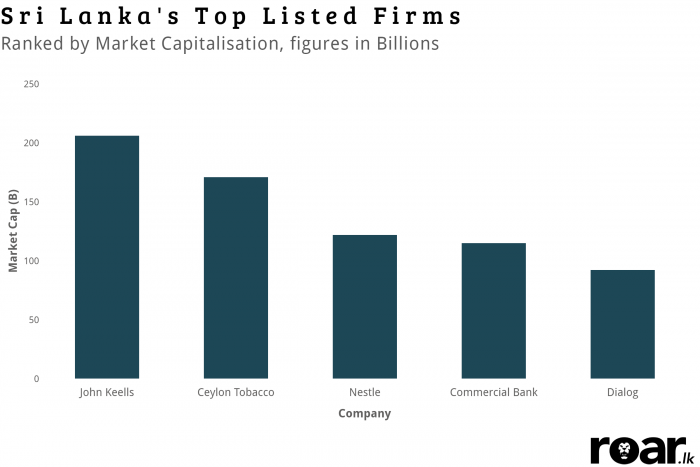
1. John Keells Holdings PLC
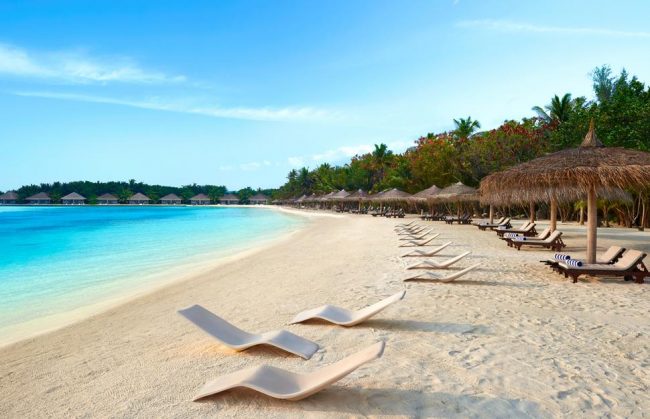
Cinnamon Dhonveli, Maldives – a leisure property belonging to John Keells. Image courtesy: Virgin Holidays
How it began:
Sri Lanka’s premier blue-chip, John Keells, had very humble beginnings. In the early 1870s, two Englishmen, Edwin & George John, decided to start a small exchange and produce broking business in Colombo. In 1948, the firm merged with two other broking firms based in London and consequently, changed its name to E. John, Thompson, White & Co. Ltd. Later, the firm acquired another local broking company named Keell & Waldock Ltd, which resulted in the firm being renamed John Keell Thompson White Ltd (JKTWL). Later, in the early to mid-70s, JKTWL acquired Walkers Tours and Travels along with the Mackinnons Group, which, during the time, had extensive interests in the shipping industry. These acquisitions paved the way for John Keells Limited, and the firm went public in 1974. Twelve years later, a new firm named John Keells Holdings (JKH) was incorporated to acquire John Keells Limited, thereby bringing to life the modern-day titan of corporate Sri Lanka.
You’d be interested to know:
- In 1994, JKH became the first Sri Lankan company to be listed abroad, after it decided to issue Global Depository Receipts (GDRs) which were quoted on the Luxembourg Stock Exchange.
- JKH manages the largest number of hotel rooms in Sri Lanka
- The firm also manages one of the most productive container terminals (South Asia Gateway Terminal or SAGT) in the country, with the other being Colombo International Container Terminal or CICT which is operated by China Merchant Holdings International, a listed blue-chip in Hong Kong.
2. Ceylon Tobacco Company PLC
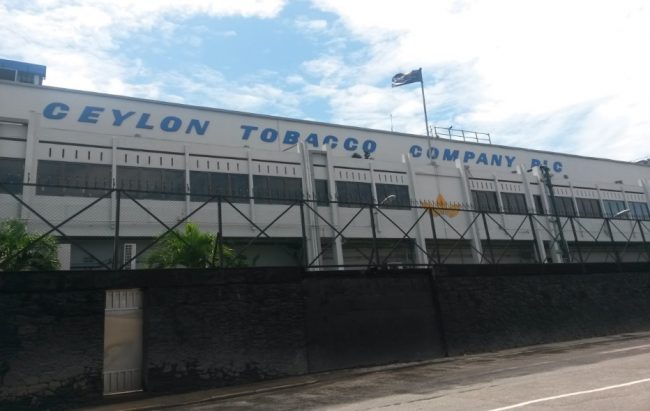
The CTC is the country’s largest individual tax contributor. Image courtesy ljenergy.com
How it began:
The second most valuable company on the Colombo Stock Exchange, CTC is part of British American Tobacco (BAT), which is headquartered in London. The parent firm, BAT, is among the top five largest tobacco companies in the world. The local arm, CTC, has been in business in Sri Lanka for over a 100 years, and again, is very much something that has survived since the British ruled Sri Lanka.
You’d be interested to know:
- CTC is the country’s largest individual tax contributor, and in 2015 contributed over 7% of the state’s total tax revenue. As a value, that comes to around LKR 92 billion, which is larger than the annual budgets of certain ministries.
- CTC takes a unique approach to CSR, under which it departs from the traditional modus operandi of CSR programmes. CTC’s approach is termed CSI (Corporate Social Investment), and under this approach, CTC aims to proactively invest in the well-being of communities around the country. The firm’s flagship CSI programme is known as SADP (Sustainable Agricultural Development Programme) and it strictly forbids the provision of direct financial assistance, focusing on other sustainable methods of poverty alleviation instead.
3. Nestlé
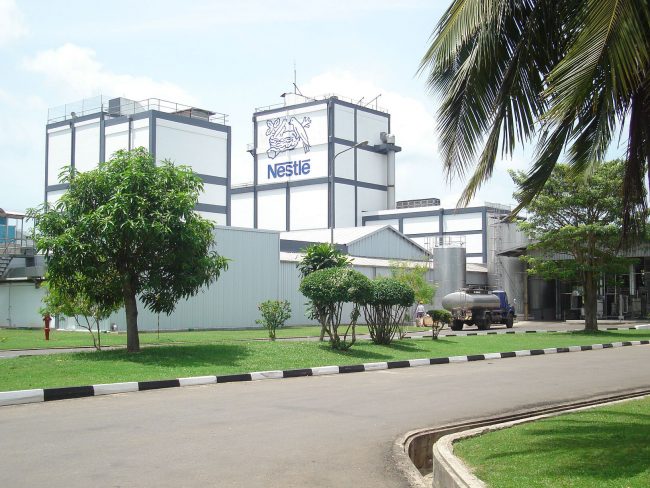
Nestlé Lanka’s factory in Kurunegala. Image courtesy Nestlé Lanka
How it began:
The producer of Milo, every young Sri Lankan’s favourite beverage, Nestlé began its operations way back in 1866. However, operations in Sri Lanka began in 1906, and the firm’s first products were Lactogen infant food, and Milkmaid, which is pretty much THE condensed milk brand in Sri Lanka. Sometime around 1934, Nestlé started Milo in Sri Lanka, followed by Maggi, Nescafé, and Nestomalt over the next 20-30 years. With all their product categories going on to become household hits, Nestlé started manufacturing coconut milk in 1986, which was later exported worldwide from Sri Lanka.
You’d be interested to know:
- Nestlé Lanka is one of the largest exporters of coconut milk powder in the world.
4. Commercial Bank of Ceylon PLC
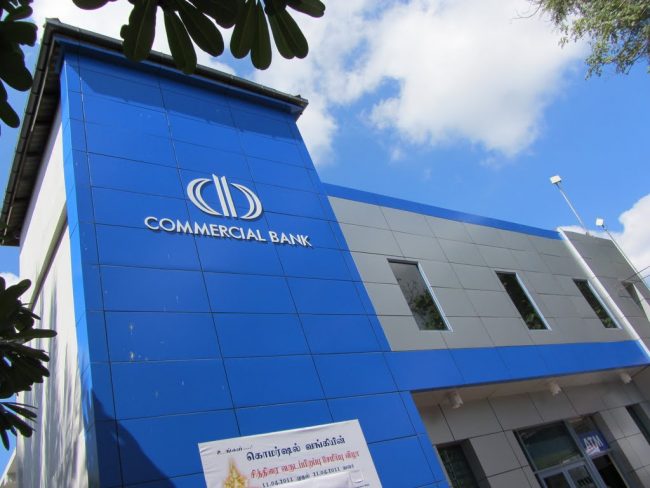
Sri Lanka’s largest private bank. Image courtesy nation.lk
How it began:
Sri Lanka’s largest private bank began operations in 1920 at Chatham Street in Colombo. Back then, it was part of The Eastern Bank, a British banking firm which, after an acquisition by The Chartered Bank, would later go on to become The Standard Chartered Bank.
In 1969, The Eastern Bank (which had been acquired by The Chartered Bank in 1957) incorporated a local subsidiary called the Commercial Bank of Ceylon in order to get around the draconian rules imposed by the then government on foreign banks. Later in 1997, Standard Chartered divested its stake in Combank, which it had inherited thanks to its acquisition of The Eastern Bank, leaving Combank to operate as an independent bank. In 2003, Combank acquired the operations of Credit Agricole Indosuez in Bangladesh, allowing it to begin operations in the land of Bengal.
You’d be interested to know:
- At the end of June 2016, Combank’s financial asset base amounted to LKR 905 billion.
5. Dialog Axiata PLC

Dialog was the first to introduce digital GSM to the country. Image courtesy adaderana.lk
How it began:
The youngest company on this list, Dialog Axiata PLC (or Dialog as it is commonly referred to in Sri Lanka), was born in 1993 by way of a partnership between Telekom Malaysia Berhad and Capital Maharaja. When Dialog entered, the market was at that time dominated by Celltel, a network which established operations in Sri Lanka way back in 1989. However, it did not take long for the young upstart to revolutionise the market. With modern digital technology as its main weapon (before Dialog’s entry, Sri Lanka’s mobile networks ran on analog technologies. Dialog was the first to introduce digital GSM to the country), and a visionary leader (Dr. Hans Wijayasuriya) at its helm, Dialog was able to become the market leader by the turn of the century. Over the next five to ten years, the firm ploughed cash into other spheres such as Data, Fixed Line, and DTH Television which enabled it to become the country’s first “Quadruple Play” telecom services provider.
You’d be interested to know:
- When Dr. Hans Wijayasuriya was appointed as CEO of the firm in mid-1997 he was only 29 years old. That made him one of the youngest CEOs ever in the history of corporate Sri Lanka. It is even more remarkable given the traditional bias in the country towards the “silver hair club” when appointing senior executives.
- When considered as an FDI, Dialog is recognised as the single largest FDI in Sri Lanka over a period of time. Its investments into the country since inception total almost USD 2 billion.
And with that, it’s a wrap for today. Who said corporates were boring?
Featured image credit kesara.lk







